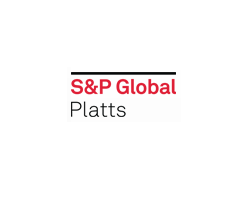Global Coal Market a Huge Map of Volatility, U.S. Producers Need to Adapt

May 11, 2019 - Volatility in the global thermal coal market is the new constant as the Northern European delivered price becomes redundant and demand centers change, requiring US producers to begin to adapt their export strategies, Javelin Global Commodities CEO said Thursday.
"Exports are being affected by a supply push on one side and a demand pull on the other," providing a strong opportunity to build the export profile of the US, Javelin's Peter Bradley said at the Eastern Fuel Buyers Conference in Orlando, Florida.
More coal-powered generation growth is entering the global market as countries in Southeast Asia, the Middle East and West Africa build coal plants at a higher rate than Western countries are getting rid of them.
Bradley noted as examples Pakistan building a 15-MW, coal-fired power plant and receiving its first proper delivery, along with a new 6,000 MW coal plant being built along the Suez Canal.
U.S. Competition
Competing with the U.S. will be Russian coal as the country's exports begin to see the most growth in the global market, Bradley said.
Russian exports have grown 3%-5% each year over the past few years, and are expected to continue to grow at that rate, he noted, adding that the country has invested a lot into ports and rail, particularly in the east.
On the other hand, Indonesian coal exports will peak this year and then begin to go down as the country builds its coal fleet and uses its domestic production.
Within U.S. basins, Central Appalachian coal will struggle the most in exports as it competes with the Russian exports into Europe and the Middle East.
Higher sulfur Illinois Basin and Northern Appalachian coal, on the other hand, will compete well in Europe and Asia, Bradley said.
NAPP coal, he noted, is becoming an Asian product as European demand dies.
Asian buyers, he said, are changing global demand dynamics as they tend to buy spot rather than term-contracts, unlike European buyers.
The coal market has become a "huge map of volatility," and "it is here to stay," Bradley said.
"The biggest problem going forward is not moving coal, but finding new homes for high sulfur coal," he said.
Northern European Delivered Price Struggling
The global coal market is becoming much more focused on the Pacific region, but "unfortunately benchmark hedging is all about the Atlantic and Europe," Bradley said, emphasizing the lack of liquidity in the European market.
"API2 is becoming less and less relevant for exports," Bradley said. "The market needs a hedging profile today, but how do you make it?"
In prior years when the API2 dropped exports also dropped, but the correlation is weakening, Bradley said. When the API2 dropped about $40/mt, Northern Appalachian dropped only $5/mt-$10/mt.
IMO 2020
Producers, though, need "discipline," he noted. There needs to be more consolidation in the industry, especially as demand pulls back. "Learn to crank back production at times," he said, emphasizing the need to deal with far more uncertainty.
As the U.S. market faces a changing dynamic, it will become a "two-tier system" as producers build mines purely for exports, Bradley said.
IMO 2020 will have a massive impact on ocean freight, Bradley noted, adding that the importance of freight costs cannot be underestimated.
"Everyone has to adapt," he said, adding that there will be higher pricing starting in Q1 2020 and "ocean freight will be super volatile through Q4/Q1 of 2020-2021."
It's important for exporters to lock in long term freight and manage the volatility, and essential for exporters to have lower ocean freight pricing because coal is moving longer distances.

